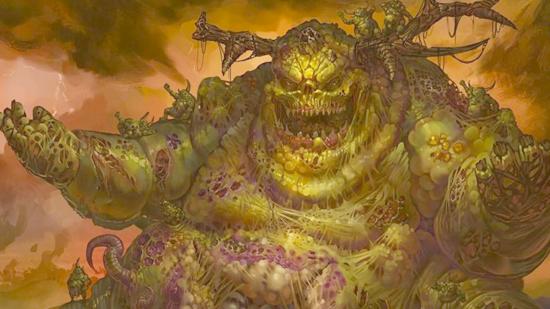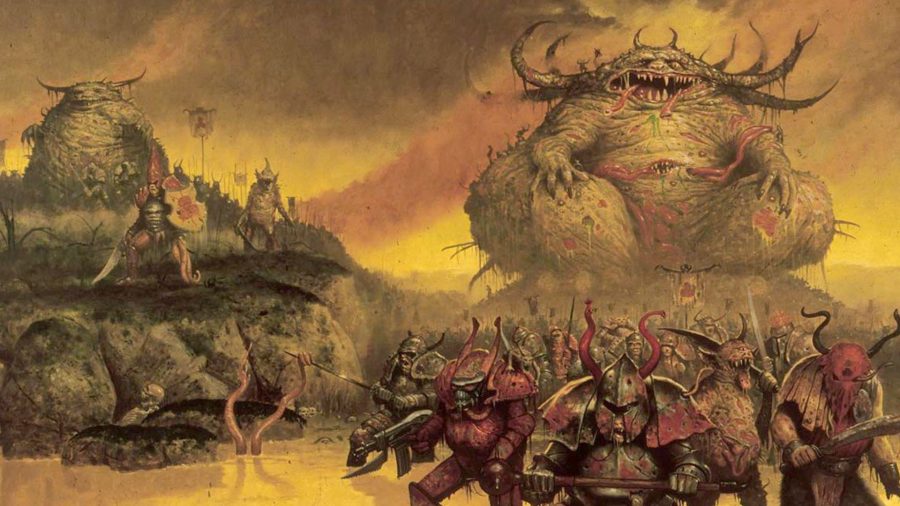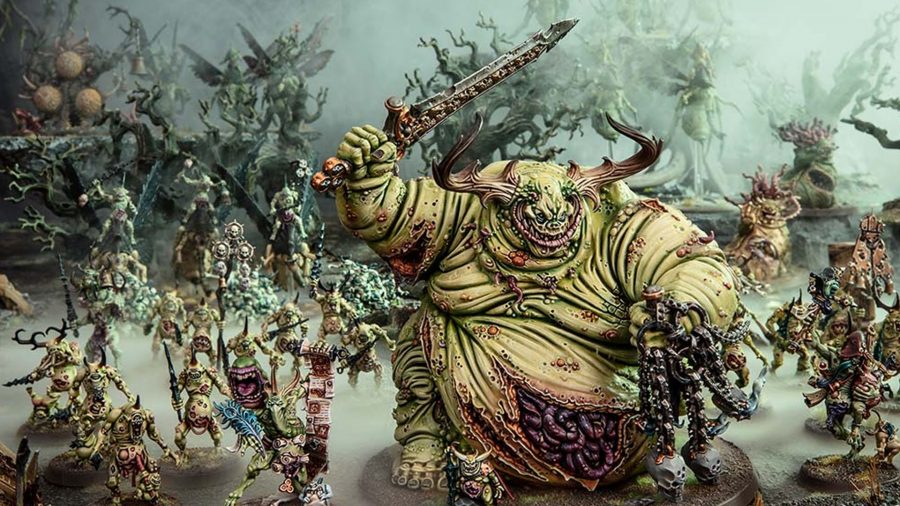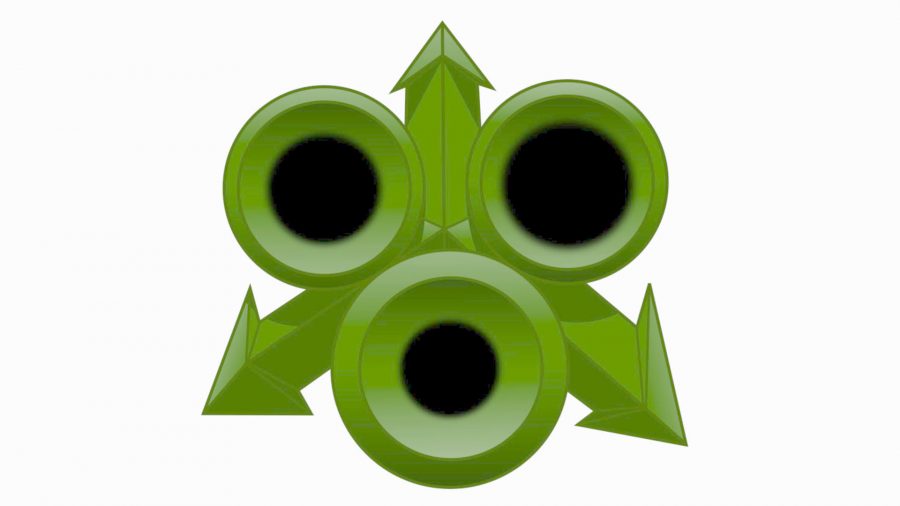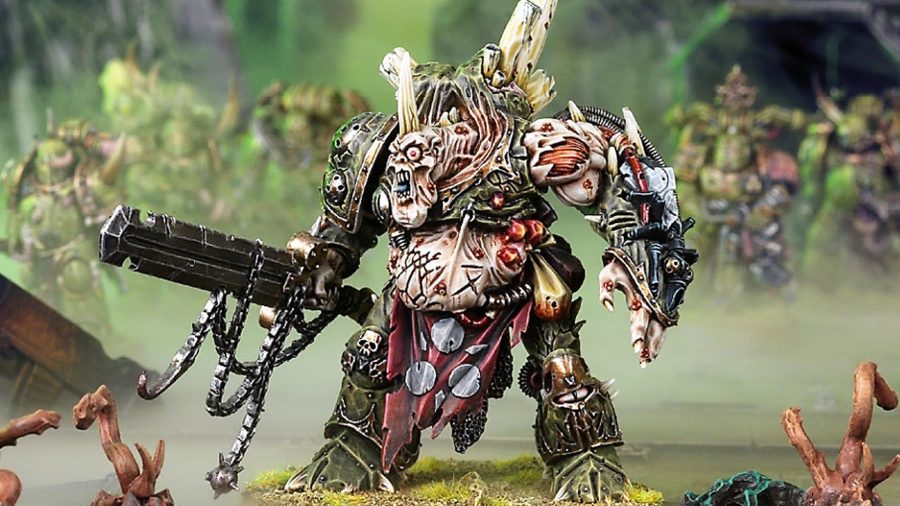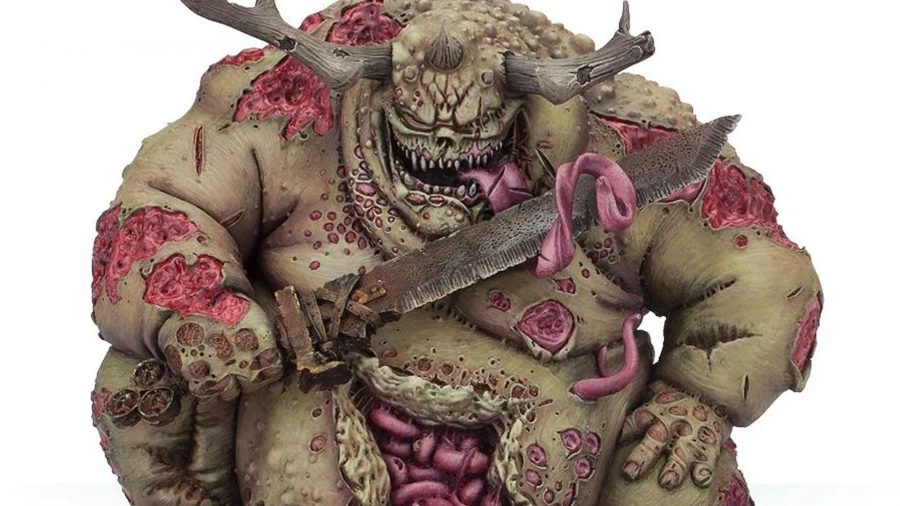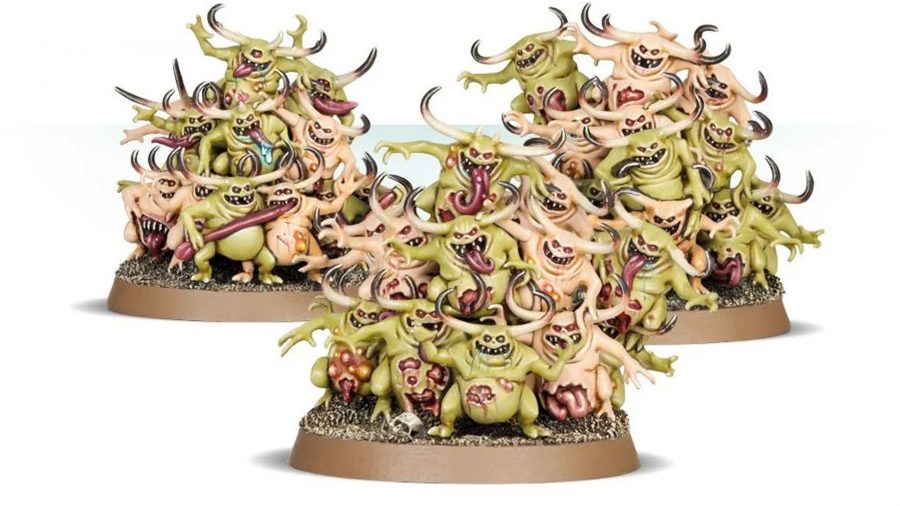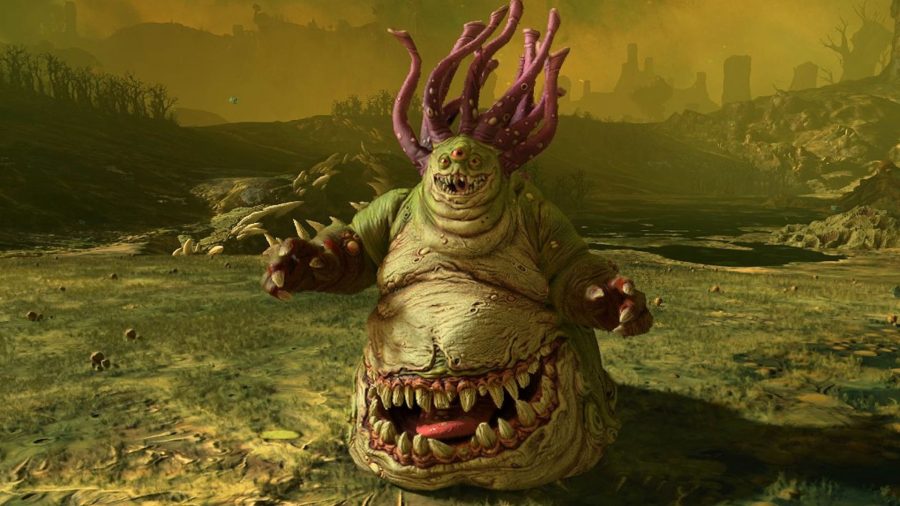In Warhammer, Nurgle is the chaos god of pestilence, disease, and entropy, making him both more passive and more involved with mortals than any of his siblings. A dark mirror to the mortal fear of death and disease, Nurgle is behind many of the plagues that have swept through the Warhammer 40k Imperium, not to mention the Warhammer fantasy worlds.
If you’d rather inspect a less virulent part of the lore, check out our guides to the many and varied Warhammer 40k factions and Age of Sigmar Armies, and indeed other Total War: Warhammer 3 factions – all of them dark and dangerous in their own way, but none of them quite so rotten.
Otehrwise with us on a trip through the Garden of Nurgle as we take a look at who Nurgle is, explore what worshipping Nurgle means for his followers, and meet some of the grotesque, pox-ridden Nurglish creatures you may find on the Warhammer tabletop.
Papa Nurgle
Woven throughout the tapestry of the Warhammer 40k universe (and beyond) are four Chaos gods, beings beyond comprehension whose whims and natures cause untold suffering for mortal species. Each of them has their own sphere of influence and reason to exist, from slaughter to schemes – but only Nurgle is truly invested in the fate of mortals.
Though he’s directly involved with spreading rot and death throughout the universe, Nurgle’s followers think of him very differently than you’d think. Far from a harsh ruler, he instead plays the role of a kindly grandfather. Think Father Christmas, but with a sack full of scabs instead of toys. That’s why his followers often refer to him as Grandfather Nurgle or, more commonly, Papa Nurgle.
The reason for this is twofold. Firstly, many of Nurgle’s followers turn to worshipping him in search of relief from a terrible affliction. This can be seen in the tale of Mortarion, where he and his Death Guard began worshipping Nurgle after a disease threatened to torture them into an early grave
Many of the plague god’s followers gain not only an immunity to pain when they walk down Nurgle’s path, but also start to take pleasure from disease itself by seeking out new plagues to infect themselves with.
The other reason Papa Nurgle is so adored by his followers is one of simple demeanour. He’s a jolly old fellow, happily stirring away at a plague-filled cauldron while his diseased children dance and play around him. Nurgle isn’t a rage-filled monster like Khorne, nor a vindictive creature filled with inhuman desires; instead, he’s a laughing, burbling father figure. It’s this that sets him apart from his chaos god siblings – especially Tzeentch, whose need for eternal change conflicts with Nurgle’s love of all things entropy.
What is Nurgle’s Rot?
Nurgle is the master of plagues but there is one above all that’s considered the most dangerous of all diseases. Nurgle’s Rot is Papa Nurgle’s divine gift to the universe: a pox so infectious and incurable it can devastate vast populations in mere days.
What makes Nurgle’s Rot so terrifying in Warhammer 40k is that it isn’t just a disease of the body. Not only will your physical form twist and decay with immense pain, but your soul will become plagued too. Moment by moment, as the infection takes hold, you’ll slip from real space into the Garden of Nurgle, becoming a new seed on one of the grotesque trees in Nurgle’s paradise of pestilence.
Eventually, that seed will ripen and open, washing away any sign of the incumbent’s previous form and leaving only a new Plaguebearer in its place.
Devoted to Nurgle’s eternal service, there are no known ways to avoid this fate (other than to die before the infection takes hold). Even fighting Nurgle’s Rot leads to further damnation, as a longer gestation period will only result in the creation of a Daemonic Herald of Nurgle.
Nurgle Symbol
The Nurgle symbol is one that’s instantly familiar, yet twisted into something new.
It calls to mind the real-world Biohazard symbol, but with a few alterations, such as arrows that are said to represent the endless spread of his daemonic diseases. Always coloured green, Nurgle’s symbol reflects the febrile fecundity of Nurgle himself.
In addition to the main symbol there are several other signs that accompany Nurgle. The most common of these is the number seven, the sacred number for Nurgle devotees. Many plagues will come in sevens, the Death Guard is the 14th Legion (a number derived from seven), and the daemonic hordes are organised in packs of seven.
Finally the Mark of Nurgle is a symbol given to those most devoted to his service. More than just a symbol, this mark grants powers of disease to the recipient, causing them to spread plagues wherever they set foot.
Nurgle Daemon Princes
Nurgle Daemon Princes are Chaos Champions who have performed terrible deeds in the name of their pestilential master. If they are lucky they may be granted boons from their patron god, twisting their bodies out of all recognition and giving them powers beyond even some daemons. Entirely subsumed by their gods’ will, Daemon Princes lose as much as they gain.
Daemon Princes of Nurgle are the logical endpoint to all human worship of Nurgle. Bloated and covered in weeping sores, they cannot be killed by most conventional means. Immune to damage and pain, they stride over battlefields infecting the healthy by their mere presence. When not in battle they continue Nurgle’s great work, devising new plagues and diseases to help bring even more to the worship of Papa Nurgle.
Great Unclean Ones
Daemons come in many shapes and sizes, but some tower above others. The Greater Daemons of Nurgle are known as Great Unclean Ones, colossal piles of rotting flesh that stagger across the planes carrying deadly diseases in their wake. Carrying giant plague flails and corroded cleavers into battle that are blessed by Nurgle himself, these giant entrail-leaking monstrosities are the pinnacle of Nurgle’s power in the material plane.
Though they are a terror to be reckoned with, Great Unclean Ones take after their father in many ways. They refer to their followers as children, and are often sentimental beings, caring deeply about other Nurgle daemons. A Great Unclean One never travels alone, and is always accompanied by chittering hordes of Nurglings, both outside their bodies and nesting deep within their open wounds.
Nurglings
If Great Unclean Ones are the largest daemons created by Nurgle then Nurglings are the smallest – tiny sacks of pus that caper, dance, and laugh around larger daemons.
Born inside Great Unclean Ones, these feisty little chaps feast on foetid flesh until they are strong enough to burst out – though they often stay close to their walking ‘fathers’. Despite this association, wherever rot and plague appears, Nurglings will not be far behind, always ready to get in the way and cause damage for both ally and foe alike.
Beasts of Nurgle
Like many of Nurgle’s creations, Beasts of Nurgle are friendly, amiable fellows who don’t really mean any harm. If you didn’t know about their overwhelming strength and plagued forms, you might even think these slug-like creatures represented no threat at all. In fact, most Beasts of Nurgle appear on the battlefield not seeking to cause harm, but rather to find new friends.
Unfortunately, a Beast of Nurgle’s friendship is more harmful than many daemons’ enmity. Beasts of Nurgle approach in clouds of noxious gas, surrounded by pox-carrying flies. If these don’t kill their ‘friend’, then the beast’s ‘hug’ surely will, wrapping their plaything in poisonous tentacles that can crush any creature into a wet paste. Don’t be sad on their behalf, though; the Beast of Nurgle won’t be too upset to lose their new friend – there are always more pals to make on the battlefield.
